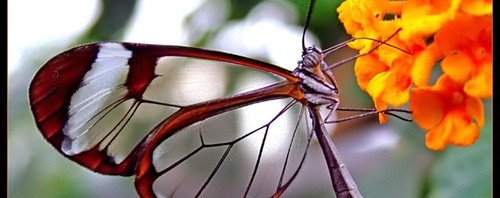Breathtakingly Beautiful Butterfly Species Facts and Photos
Owl Butterfly
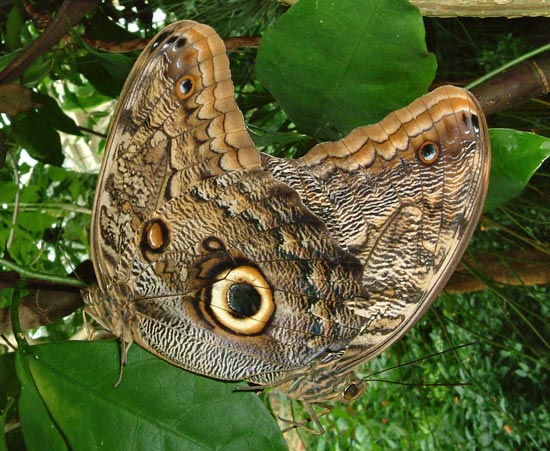
Named after their huge eyespots on their wings, which resemble owls’ eyes, the owl butterflies are found in the rain forests of Mexico, Central, and South America.
Owl butterflies are very large, 65–200 mm (2.6–7.9 in), and fly only a few metres at a time. Read more about the Owl Butterfly here>>
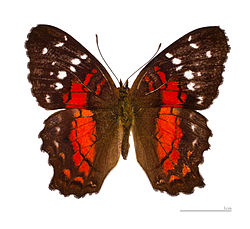
Scarlet Peacock Butterfly – Anartia Amathea
The Brown Peacock Butterfly or Scarlet Peacock Butterfly (Anartia amathea) is a species of nymphalid butterfly, found primarily in South America. The beautiful butterfly species are found from Panama to Argentina; Grenada, Barbados, Antigua. The peacock butterfly is reported as read more about the peacock butterfly here>>
Zebra Mosaic Butterfly Specie (Colobura dirce)
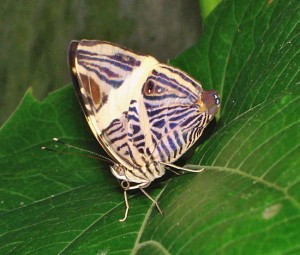
The zebra mosaic butterfly is a fruit-eating butterfly that rests head down on tree trunks or leafs.
The zebra like pattern on the wings is aimed to confuse predators so they can’t tell which end is head or tail.
When predator goes for the “head” facing up –he ends up with only a piece of wing as the butterfly takes off!
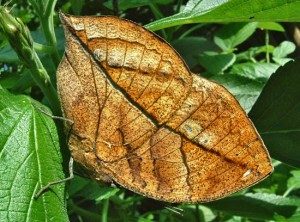
Dead Leaf Butterfly (Kallima paralekta)
The Dead Leaf Butterfly feeds on fruits and plants.
This amazingly well camouflaged butterfly lives in South East Asia. You can find Kallim paralekta in the Himalayas, from Kashmir to Sikkim, Orissa, Eastern Ghats, Pachmarhi, Amarkantak, the lower hills of Assam, Burma, and Tenasserim.
One of the most amazing examples of animal camouflage, this butterfly even has “leaf vein” markings and a stem-like “tail” in back. The insides of this butterfly wings are a gorgeous shining blue with orange markings.
PostMan Butterfly (Heliconius melpomene)
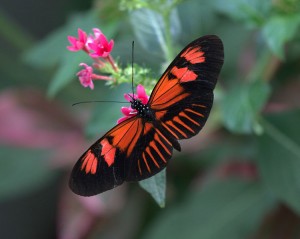
The Postman butterfly has large long wings with an orange stripe down each forewing. It is a poisonous butterfly and has red patterns on its wings.
Most butterflies only live for a few weeks, however the postman’s ability to digest nutritious pollen lets Heliconius melpomene live far longer than most other butterflies, up to 9 months.
The distribution of Heliconius melpomene is from Central America to Southern Brazil.
Heliconius melpomene caterpillar feeds on passion flower species.
Emerald Swallowtail Butterfly – Papilio palinurus
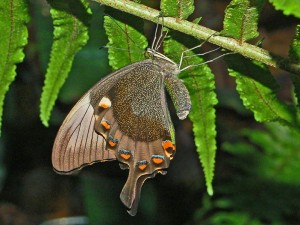
Papilio palinurus, also know as Emerald Swallowtail, Emerald Peacock, or the Green-banded Peacock, is a butterfly of the genus Papilio belonging to the Papilionidae family.
Papilio palinurus’s wingspan reaches about 8–10 centimetres (3.1–3.9 in). This butterfly is one of the very few green butterflies, that are unusual in nature.
The dorsal sides of the wings are covered by a powder of green scales and the background vary from dark greenish to black, with broad bright emerald green metallic bands.
The undersides are black with orange, white and blue spots along the edges of hind wings, that show extended tails at the end.
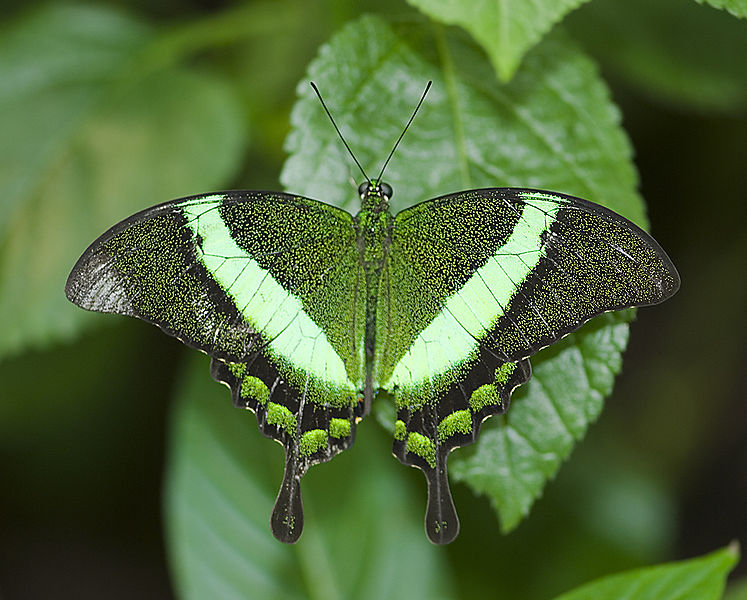
These butterflies fly very swift and fast. Caterpillars feed on plants of genus Euodia belonging to the Rutaceae, commonly known as the rue or citrus family.
The iridescent green sheen of the bands of Papilio Palinurus is not produced by pigments, but is structural coloration produced by the microstructure of the wing scales. They refract the light and give rise to blue and yellow visible reflections, producing the perception of green colour when additively mixed.
This amazingly colored sparkly butterfly can be found primarily in South East Asia, particularly in Burma – Peninsular Malaysia, Sumatra, Borneo, Indonesia (Simeulue), Basilan, Island of Nias, Philippines (Palawan, Balabac, Cuyo, Busuanga, Dumaran).
Malachite Butterfly – Siproeta stelenes
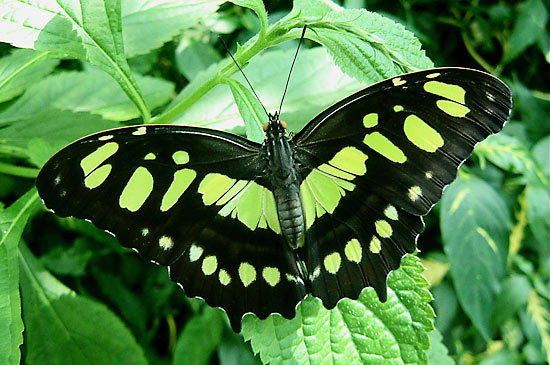
The Malachite Butterfly (Siproeta stelenes) is a neotropical brush-footed butterfly (family Nymphalidae).
The malachite has large wings that are black and brilliant green or yellow-green on the uppersides and light brown and olive green on the undersides.
It is named for the mineral stone malachite, which is similar in color to the bright green on the butterfly’s wings.
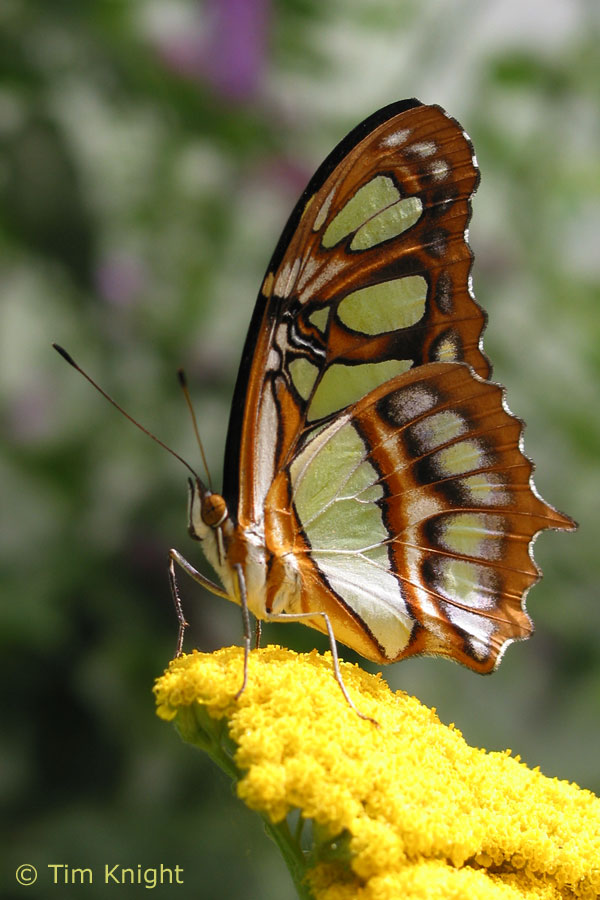
The wings are typically between 8.5 and 10 cm (3.3 and 3.9 in) wide. The malachite inhabits Central and northern South America, where it is one of the most common butterfly species. Its distribution extends as far north as southern Texas and the tip of Florida, to Cuba and south to Brazil.
Adult Malachite butterflies feed on flower nectar, rotting fruit, dead animals, and bat dung. Females lay eggs on the new leaves of plants in the Acanthaceae family, especially ruellia. The larvae are horned, spiny black caterpillars with red markings.
– Wikipedia.org
Cattleheart Butterfly
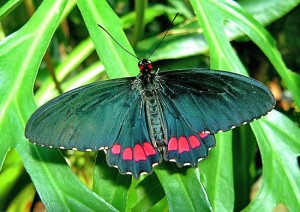
The Cattleheart butterfly belongs to the swallowtail family.
Its bright greenish blue colors warn predators that it is bad tasting and toxic.
Many other none poisonous butterfly species mimic these colors to gain protection.
Cattleheart butterflies are found throughout Central and South Americas.
Paperkite Butterflies Facts
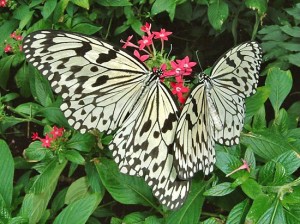
The Paper Kite (Idea leuconoe) Butterflies are found in Southeast Asia.These beautiful dainty butterflies can be seen fluttering above the flowers, their translucent wings looking like fine paper.They are relatives of the monarch butterfly, and like monarchs are protected from predators by poisonous chemicals in their bodies.
PaperKite Butterflies are very tame and unafraid of people.
Buckeye Butterfly Information
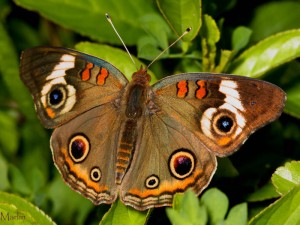
The Common Buckeye or simply Buckeye (Junonia coenia)inhabits southern Manitoba, Ontario, Quebec, and Nova Scotia and all parts of the United States except the northwest, and is especially common in the south, the California coast, and throughout Central America and Colombia. It lives mostly in open areas with low vegetation and some bare ground.
The remarkable eyespot design on the Buckeye’s wings likely serves to startle or distract predators, especially young birds. The butterflies fly often during the year with a large northward migrations for the summer.
Much of the northern United States is only colonized in the fall from southern populations.
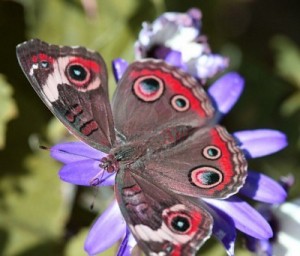
Some of the later broods move southwards in the fall. Common Buckeyes exhibit seasonal polyphenism, the summer version of the butterfly has light yellowish ventral wings and is called “linea”. The Fall morph has pink ventral wings, and is called the “rosa” morph.
Adult Buckeye butterflies eat nectar and drink from mud and damp sand. Males perch on bare ground or low plants, occasionally patrolling in search of females, but they are not territorial. The female lays eggs singly on buds or the upper side of leaves.
The caterpillars are solitary and feed on the foliage, flowers, and fruits of the host plant.
ClearWing Butterflies Facts
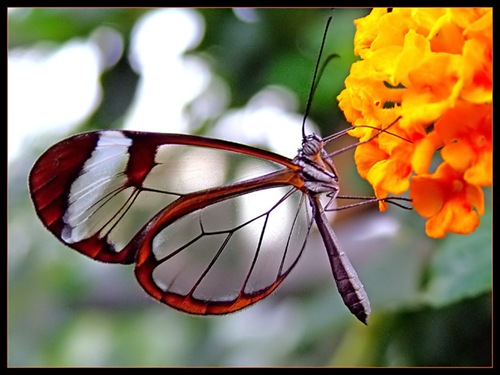
Clearwing and glasswing butterflies have nearly transparent wings that render them almost invisible to predators.
Butterfly wings consist of small scales, which usually carry pigmentation differentiating sex and species. This accounts for the brilliant patterns seen on such insects as the Monarch butterfly.
However, the clearwing and glasswing butterflies have relatively few wing scales on large portions of the wing, which aids them in camouflaging themselves.
Hope you Enjoyed this News365.co Article on the 10 Most Amazing Butterflies in the World! Keep checking back for more news and nature articles.

